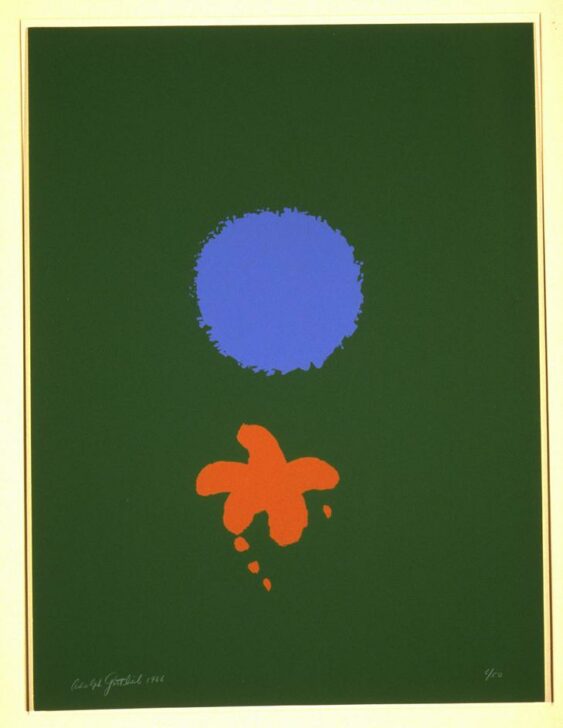Green Ground – Blue Disc
Adolph Gottlieb

Description
In the late 1930s, Adolph Gottlieb moved from his native New York City to Arizona to paint for the Works Progress Administration’s Federal Art Project. After two years in the Southwest, Gottlieb returned to the East Coast and soon embarked on a very different artistic path. Though he quickly abandoned the figurative work created under this federal program in favor of a European-influenced abstraction, his time in Arizona— particularly his exposure to the colors and space of the desert landscape—would emerge over the coming decades as a central motif in his work. Beginning in the 1940s, Gottlieb created paintings he coined "pictographs"—grid-like patterns of imaginary signs and symbols that suggest primitive mythologies with connections to both the Far East and the indigenous art of the Americas. The following decade brought an evolution from this highly stylized grid to a less dense, more abstract space known as his "imaginary landscape" series. This series further evolved in the late 50s with his "burst" series, characteristically composed of a floating sphere hovering above a gestural mass.
Green Ground—Blue Disc is a fine example of Gottlieb’s signature "bursts." The vibrant palette of leaf green, cornflower blue, and golden orange evoke the colors of the blooming Southwestern desert. The composition has a strong feeling of energy not only due to the interplay of the two central forms but also as a result of the artist’s use of bold, complementary colors that seem to bounce off one another. In the artist’s "bursts," the orb is often interpreted as a sun or moon floating above a planetary mass that suggests a sense of vibration and, perhaps, internal unrest. Given the newly emerging environmental movement of the time, the notion of earth’s fragility is perhaps a significant factor influencing the creation of this series.
Katie Weiss, Research Assistant, on the occasion of the exhibition The New York School: Abstract Expressionism and Beyond and Beyond, July 20, 2002 – January 19, 2003
Usage Rights:
If you are interested in using an image for a publication, please visit https://umma.umich.edu/request-image/ for more information and to fill out the online Image Rights and Reproductions Request Form.